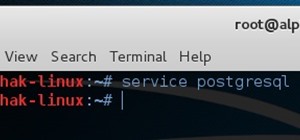This tutorial is for those who've purchased an account with Private Internet Access to hide your VPN and would like to set it up in Kali. Please note, you can chose to run your PIA service from your Windows computer without configuring it in linux as long as you'll be using a NAT connection. Using a NAT connection will allow your Windows machine and Kali Virtual Machine to use the same IP address, hence if your IP is hidden on one, it will be hidden on the other.
This requires you to have your username and password for your PIA account handy.
Before proceeding, navigate to /usr/share/openvpn and list it's contents 'ls'. This is all that should be there: 'verify.cn' (sorry can't upload any screen shots at the moment)
Step 1: Download OpenVPN.Zip from PIA
Download openvpn.zip from the following link: https://www.privateinternetaccess.com/openvpn/openvpn.zip
Step 2: Unzip Contents
I'm going to confirm my file was downloaded and make a new directory to unzip the contents of the download into:
cd Downloads
ls
you should see 'openvpn.zip'
Unzip zip file:
Downloads# unzip openvpn.zip
Step 3: Establish Connection
From Downloads# cd /openvpn
Downloads/openvpn# openvpn --config
Physically open your 'openvpn' folder and drag the appropriate 'opvn' file into your terminal and drop it in after the '--config' command.
Hit <enter>
It will prompt you to enter your username and then password. Enter these and the connection will establish. To make sure, run 'ifconfig' from the terminal to confirm 'tun()' has been created. Then visit http://whatsmyip.com" to confirm your IP address has successfully changed.
Just updated your iPhone? You'll find new emoji, enhanced security, podcast transcripts, Apple Cash virtual numbers, and other useful features. There are even new additions hidden within Safari. Find out what's new and changed on your iPhone with the iOS 17.4 update.























4 Comments
Step 3: If I type in "openvpn --config" it doesn't recognize --config as a valid command or parameter.
Nevermind. User error.
glad you got it figured out :)
Is there a way to forward ports without the client? I saw the article for advanced users full of complicated scripts to run. Isnt there a better way??
Step 3: If I type in "openvpn --config" it doesn't recognize --config as a valid command or parameter.
Share Your Thoughts